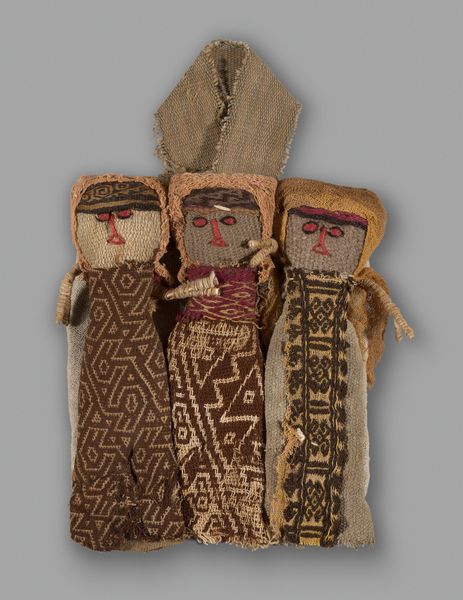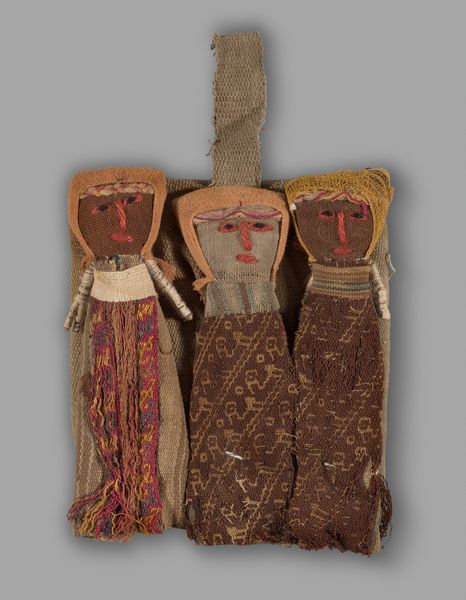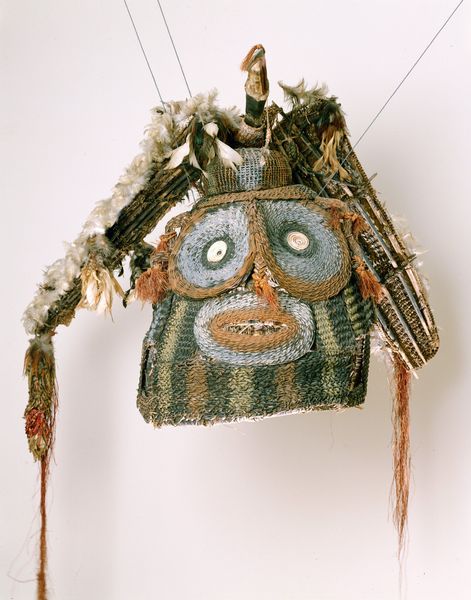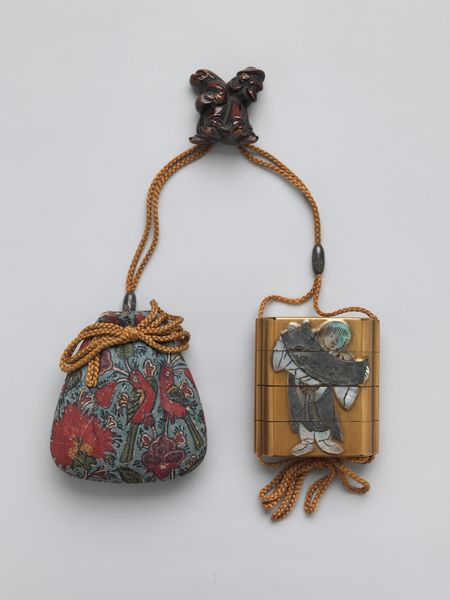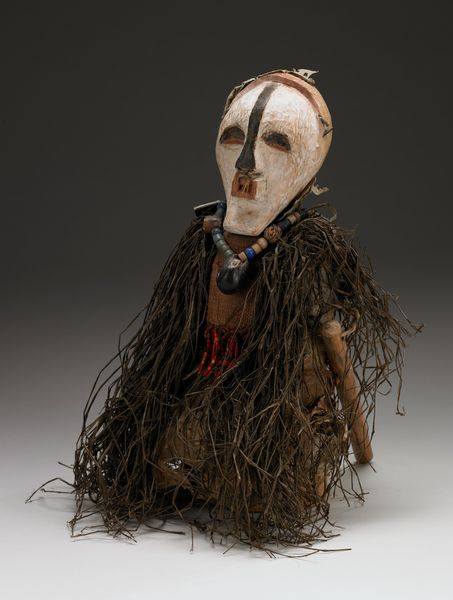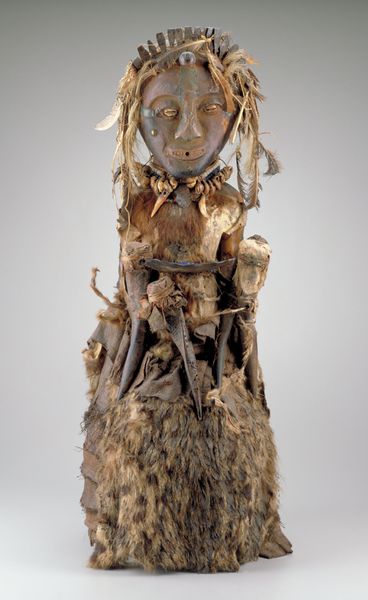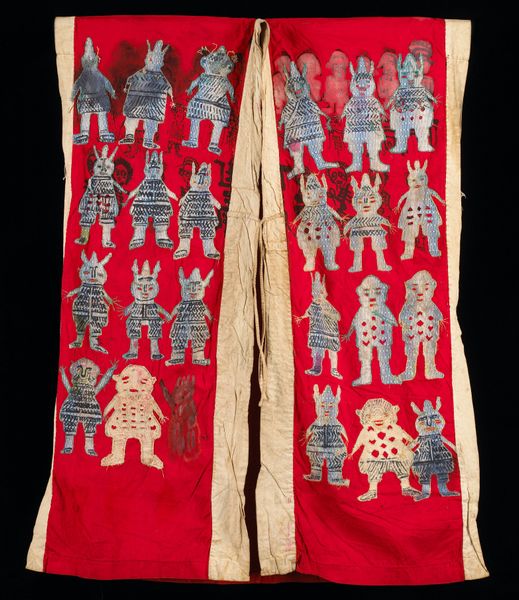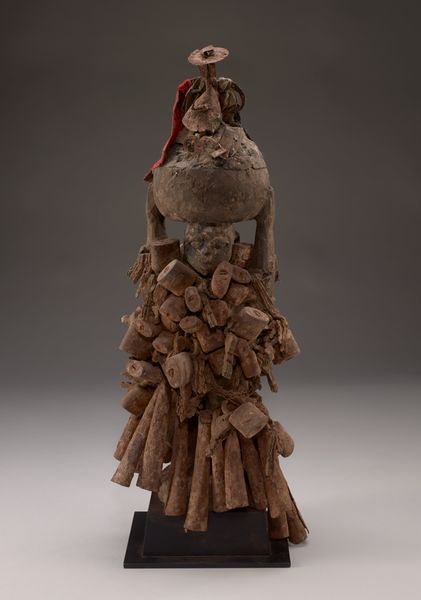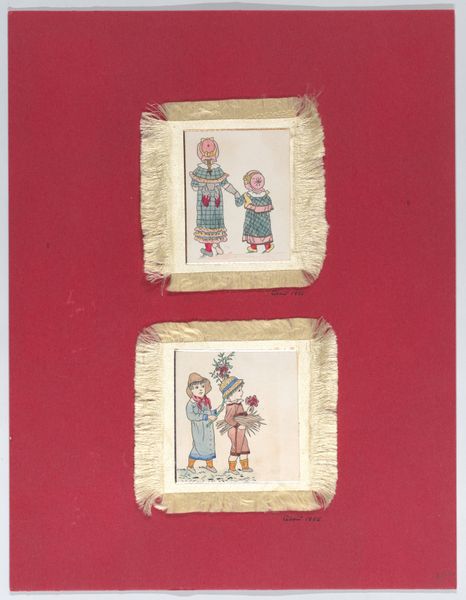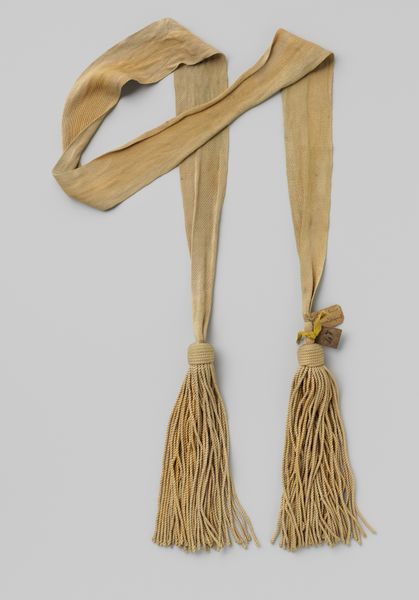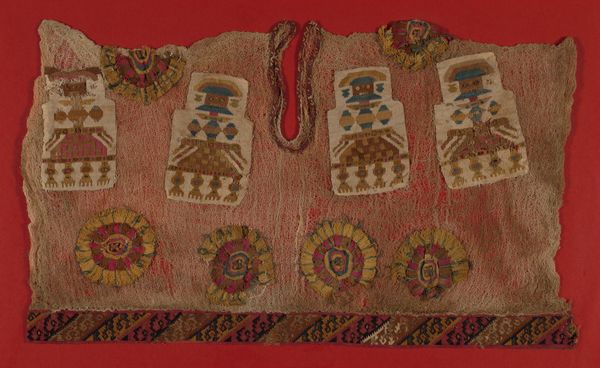
fibre-art, weaving, textile, wool
#
fibre-art
#
weaving
#
textile
#
wool
#
latin-american
#
yoruba-art
#
decorative-art
Dimensions: 24.1 × 16.5 cm (9 1/2 × 6 1/2 in.)
Copyright: Public Domain
Editor: This textile work, "Dolls," comes to us from the Chancay culture, and The Art Institute of Chicago dates it somewhat ambiguously between 1476 and 1984. Created using weaving, wool, and other fibre art techniques, the figures have a primitive quality that makes me think about ritualistic objects. What do you see in this piece? Curator: The power in these three figures lies precisely in their symbolic ambiguity. Think of how dolls function across cultures - representations of idealized selves, protectors against harm, conduits to ancestors, or even objects of sympathetic magic. Notice how the faces are reduced to the simplest forms: brow, eyes, and a vertical slash for the nose or mouth. What emotions do these minimal features evoke for you? Editor: I see solemnity, a quiet watchfulness. It's like they're holding onto something ancient and important. Curator: Precisely! The restricted palette of browns, creams, and faded reds also reinforces that sense of age and enduring memory. The textile itself, with its woven patterns, bears witness to the culture that created it. The choice of wool, a natural material, adds another layer, connecting us to the earth and ancestral practices. Editor: It’s almost like the dolls are guardians of cultural memory, the weaving acting as a visual language holding onto their stories. Curator: Exactly. These "Dolls" aren't just decorative objects; they're vessels carrying cultural weight. Consider also the care put into the making of this textile – the precise stitches, the selection of materials. This deliberate creation underscores their significance beyond mere decoration. Editor: I hadn't considered how active they seem, the way they seem to act as representations and symbols together. The idea of something ancient portrayed in the figures and preserved by the textile definitely shifted my perspective on the work. Curator: And perhaps that's the true magic of such pieces - to connect us to the deeper currents of human experience.
Comments
No comments
Be the first to comment and join the conversation on the ultimate creative platform.
